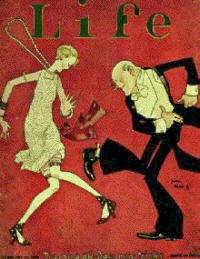JAZZ
The music genre of Jazz dates back to the 20th century in which its roots branched from primarily African with some European backgrounds in the early 1920's. Quickly, jazz music became popular overtime even including its own twist to popular music that we know and love in today's society. Once the music of jazz became widespread around the world, those that came from musical backgrounds began interpreting jazz into their own way which has now formed several branches of jazz such as soul jazz, punk jazz, jazz funk, and New Orleans jazz to name a few. Overall, the sounds of jazz is one of the many distinct sounds in music that I feel serves its purpose to fulfill the enjoyment of its many listeners.
 On the sociological side of this popular cultural phenomenon, there a few concepts that would help give a better understanding about jazz. The interactionist approach plays a role in reference to Charles Horton Cooley where he mentions that popular culture is a tool to help give us meaning through interacting with others. For jazz, the music that is played is made to interact with its fellow listeners on an emotional level (relaxed, sad, spunky, etc). The concept of the effects of in creased stylization will definitely play a part in jazz. Being that the musicians who create the songs that they play, displays not only their talent, but also their art. With art, the musician's focus relies on aesthetic skills to help deliver their creativity that they have as an individual, and in turn, draws attention to the viewers/ listeners who show a sense of interest.
On the sociological side of this popular cultural phenomenon, there a few concepts that would help give a better understanding about jazz. The interactionist approach plays a role in reference to Charles Horton Cooley where he mentions that popular culture is a tool to help give us meaning through interacting with others. For jazz, the music that is played is made to interact with its fellow listeners on an emotional level (relaxed, sad, spunky, etc). The concept of the effects of in creased stylization will definitely play a part in jazz. Being that the musicians who create the songs that they play, displays not only their talent, but also their art. With art, the musician's focus relies on aesthetic skills to help deliver their creativity that they have as an individual, and in turn, draws attention to the viewers/ listeners who show a sense of interest.

No comments:
Post a Comment